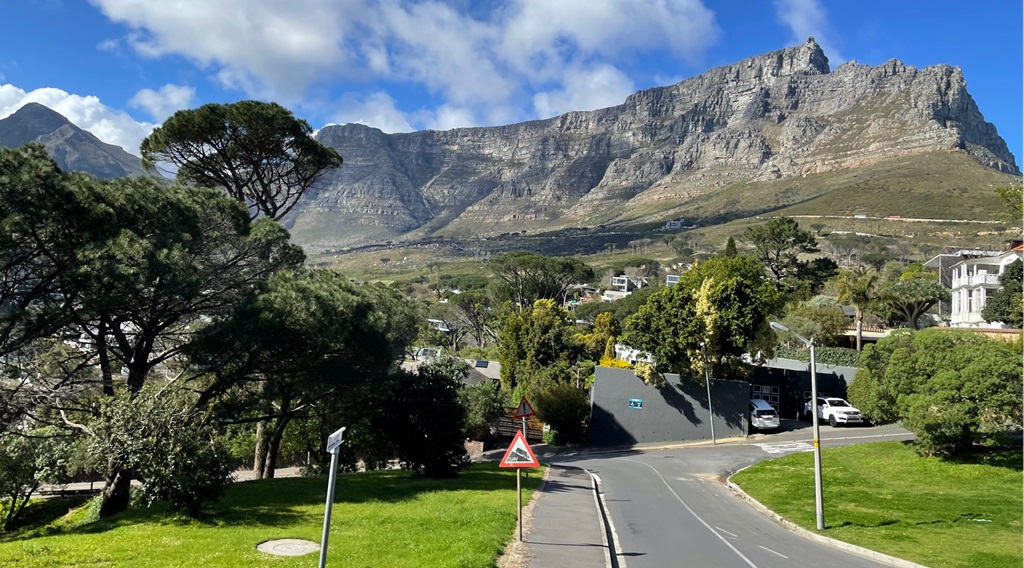This past week, the Council, alongside the Black Alliance for Just Immigration (BAJI), had the privilege to present the report the organizations co-authored on U.S. Customs and Border Protection’s (CBP) deployment during protests demanding racial justice after the murder of George Floyd at the Sixth World Conference on Remedies to Racial and Social Inequality.
The gathering took place at the University of the Western Cape in Cape Town, South Africa, an enchanting city in the country’s south. South Africa’s painful history served as a constant reminder of the importance of the discussions. The Council joined researchers, academics, and community advocates to discuss different aspects of inequality, both in South Africa and throughout the world, as well as theories and practices on how to fix them.
In 2023, the Council and BAJI published a report that laid out the role CBP played in quashing peaceful protests organized in response to the murder of George Floyd by police in Minneapolis. The report, which showcased records obtained by the Council and BAJI through a request under the Freedom of Information Act, found that CBP deployed heavily militarized units to what even the agency itself acknowledged were predominantly peaceful protests. Analysis of the available records also found that the units received limited training on how to protect protesters’ rights.
The Council’s goal at the Conference was to discuss the report’s findings with researchers from all over the world. Our panel drew attendees from several countries, including Zimbabwe, Ethiopia, as well as U.S. states like California and Minnesota. Additionally, the Council and BAJI’s presentation touched upon the future of enforcement and the impact of communities of color.
CBP’s deployment at these protests during the Trump administration can serve as a model for how the agency, or other federal law enforcement, may be used to stymie social movements. It is imperative that world audiences bear witness that CBP agents violated protesters’ rights—in at least one instance, detaining protesters in unmarked vehicles—and that government transparency efforts are a tool to hold the government accountable for such violations.
While the opportunity to present this project was incredible, the chance to contextualize the Council’s work, and immigration policy more generally, within the greater eco-system of the fight against inequality was even more transformative. One of the panels, for example, featured the work of two U.S. professors studying the disproportionate impact Black and Native American families face in the foster child system in America. The researchers noted that some of the issues vulnerable families encounter often stem from how poverty is commonly criminalized in our country. For example, parents who lack sufficient resources to make home repairs could be threatened with losing their children to foster care. The researchers concluded that the child welfare system has been built upon principles that permeate inequity, which makes it difficult to reform.
This dynamic bears certain similarities with our current immigration system. It is well-documented that the U.S. immigration system was built upon immigration restrictions that were biased against particular nationalities, and favored other nationalities, like the Chinese Exclusion Act of 1882 and the different iterations of the per-country caps for immigrants that exist even today. The United States needs to build a fairer system that gives migrants opportunities to come to the country through legal and safe channels. But new pathways cannot be built upon the old ones because those were premised on antiquated, and often racist views, of immigrant communities.
During a different panel, researchers highlighted the history of the Conference’s location, which also conjured up comparisons to immigration policy. Universities for Blacks built during apartheid in South Africa often were located in remote areas of cities, which made them difficult to access even until this day. The University of the Western Cape, which hosted the Conference, was established in 1959 as a constituent college of the University of South Africa for people classified as “Coloured.” It is located in Belleville, about 12 miles from the center of Cape Town, and it is difficult to access through public transportation.
This lack of accessibility by design bears a striking resemblance to how immigration detention centers in the United States often are constructed in remote rural areas where there are very few resources, including attorneys. It’s almost as if failure by those who need to access it is part of the plan.
Despite South Africa’s history and the vestiges of its past still visible today, the country’s natural beauty and its people are inspiring. The energy of South African students who attended the Conference, and their passion to improve the conditions in their country, was compelling. South Africans’ kindness and genuine willingness to help people who are outsiders to their communities was palpable. Cape Town’s scenery, from the imposing backdrop of Table Mountain to the vibrant colors of the city’s coastline, is truly magnificent.
Getting the opportunity to share the Council’s research among human right activists and academics from all over the world and experiencing this in a place with the rich history and natural beauty of South Africa, made this presentation a transformative experience.
FILED UNDER: Customs and Border Protection


